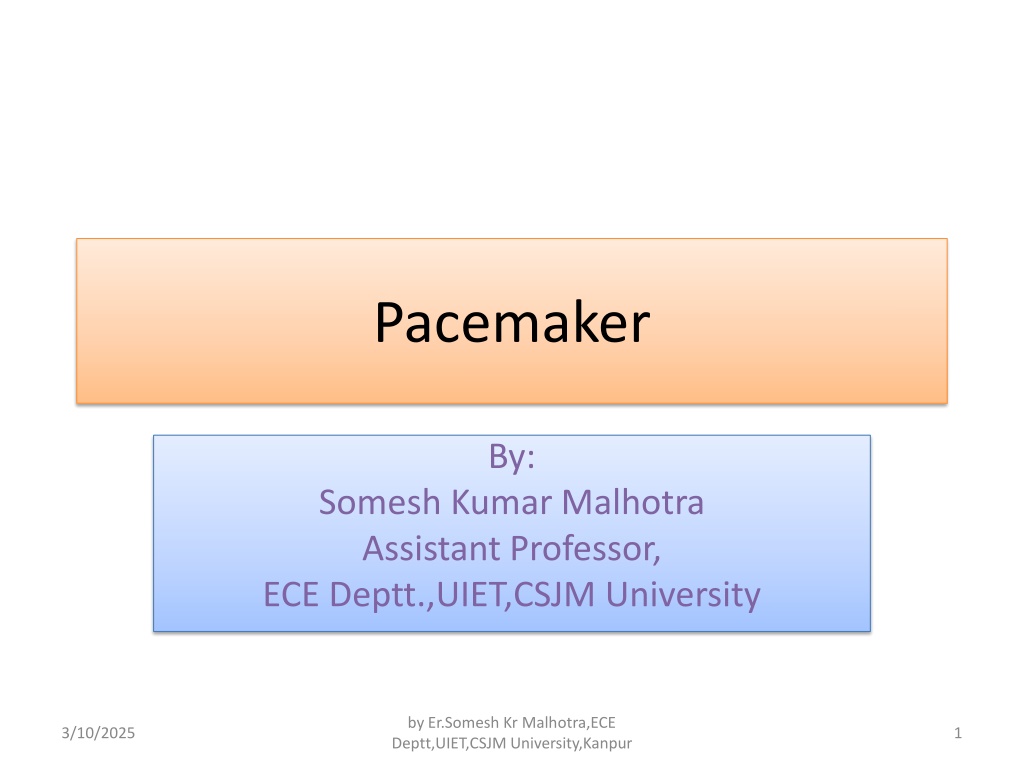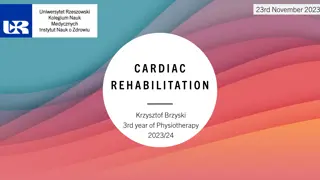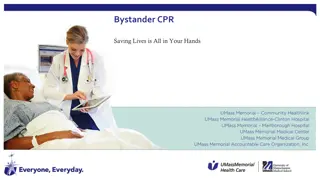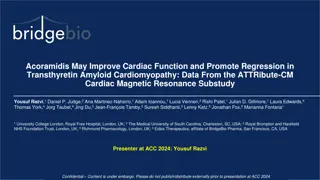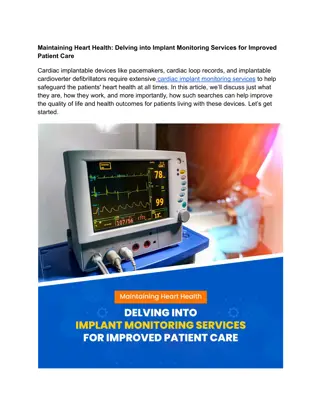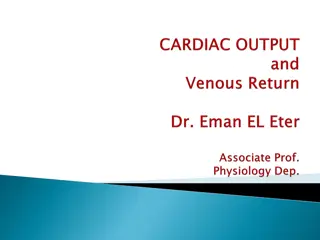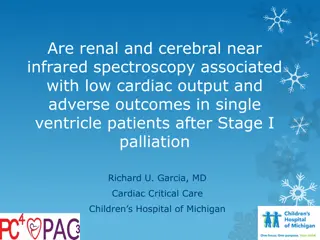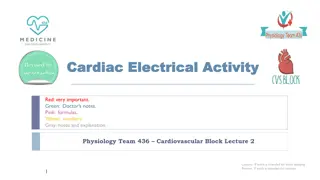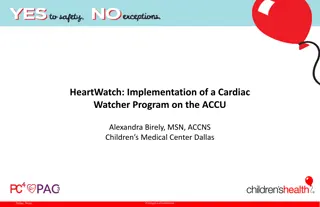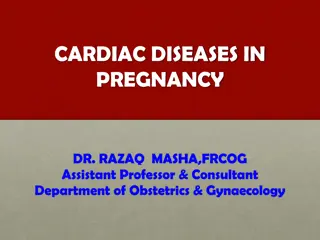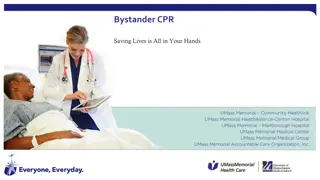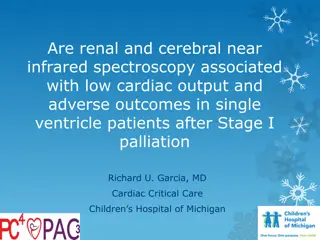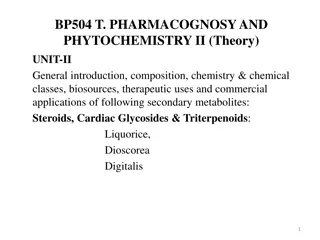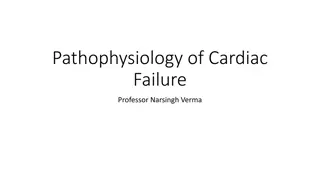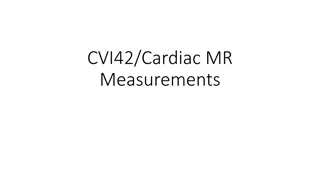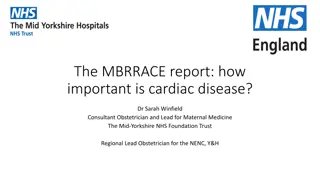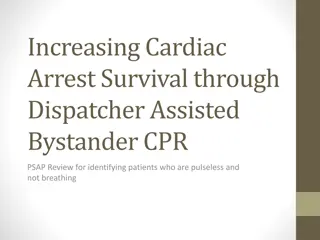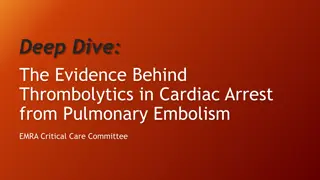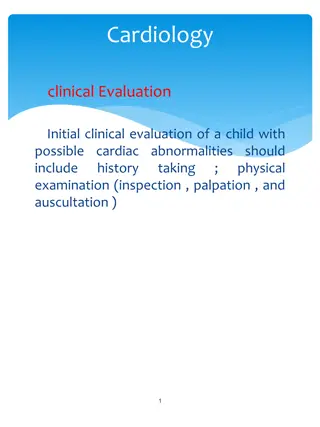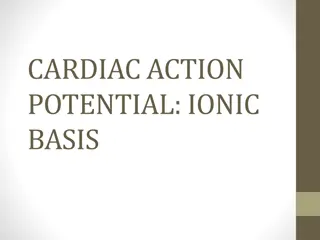Pacemakers in Cardiac Health
Initiation of heart rhythm, implications of pacemaker failure, and the necessity of artificial pacing methods for maintaining proper circulation are discussed in this informative content presented by Er. Somesh Kr. Malhotra, ECE Dept., UIET, CSJM University, Kanpur.
Download Presentation

Please find below an Image/Link to download the presentation.
The content on the website is provided AS IS for your information and personal use only. It may not be sold, licensed, or shared on other websites without obtaining consent from the author.If you encounter any issues during the download, it is possible that the publisher has removed the file from their server.
You are allowed to download the files provided on this website for personal or commercial use, subject to the condition that they are used lawfully. All files are the property of their respective owners.
The content on the website is provided AS IS for your information and personal use only. It may not be sold, licensed, or shared on other websites without obtaining consent from the author.
E N D
Presentation Transcript
Pacemaker By: Somesh Kumar Malhotra Assistant Professor, ECE Deptt.,UIET,CSJM University by Er.Somesh Kr Malhotra,ECE Deptt,UIET,CSJM University,Kanpur 3/10/2025 1
Introduction The rhythmic action of the heart is intiated by regularly recurring (electrochemical impulse) originating at the natural cardiac pacemaker located at the sinoartrial (SA) node. Each pacing impulse is propogated throughout the myocardium, spreading over the surface of the artria to the artrio ventricular valve and depolarizing the artria. action potential by Er.Somesh Kr Malhotra,ECE Deptt,UIET,CSJM University,Kanpur 3/10/2025 2
Introduction After the brief delay at the AV node the impulse is rapidly conducted to the ventricle to depolarize the ventricular musculature. A normal sinus rhythm (NSR) depends on the continuous, periodic performance of the pacemaker and the integrity of the neuronal conducting pathways. Any change in the NSR is called an arrhythmia (abnormal rhythm) by Er.Somesh Kr Malhotra,ECE Deptt,UIET,CSJM University,Kanpur 3/10/2025 3
Introduction Should the SA node temporarily or permanently fail because of diseases (SA node diseases). Under these condition the heart is paced at a much slower rate than normal, ranging between 30 and 50 beats per minute(BPM). The result is a condition called bradycardia (slow heart), in which the heart cannot provide sufficient blood circulation to meet the body s physical demands. by Er.Somesh Kr Malhotra,ECE Deptt,UIET,CSJM University,Kanpur 3/10/2025 4
Introduction During the transition period from a NSR to a slow rhythm, dizziness and loss of consciousness (syncope) may occur because of diminished cardiac output. Heart block occurs whenever the conduction system fails to transmits the pacing impulse from the artria to ventricle properly. First degree block an excessive delay at the AV node occurs that causes the P-R interval to exceed 0.2 seconds for normal adults. by Er.Somesh Kr Malhotra,ECE Deptt,UIET,CSJM University,Kanpur 3/10/2025 5
Introduction Second degree block results in the complete but intermittent inhibition of the pacing impulse, which may occur at the AV node. Total and continuous impulse blockage is called third degree block. In all these conditions ,an artificial method of pacing is generally required to ensure that the heart beat at the rate that is sufficient to maintain the proper circulation. by Er.Somesh Kr Malhotra,ECE Deptt,UIET,CSJM University,Kanpur 3/10/2025 6
Pacemaker System by Er.Somesh Kr Malhotra,ECE Deptt,UIET,CSJM University,Kanpur 3/10/2025 7
Pacemaker System Pacemaker Components Pulse Generator Electronic Circuitry Lead system Pulse Generator Lithium cell is the current standard battery Advantages: Long life 4 to 10 years Output voltage decreases gradually with time making sudden battery failure unlikely by Er.Somesh Kr Malhotra,ECE Deptt,UIET,CSJM University,Kanpur 3/10/2025 8
Pacemaker System by Er.Somesh Kr Malhotra,ECE Deptt,UIET,CSJM University,Kanpur 3/10/2025 9
Pacemaker System by Er.Somesh Kr Malhotra,ECE Deptt,UIET,CSJM University,Kanpur 3/10/2025 10
Pacemaker System by Er.Somesh Kr Malhotra,ECE Deptt,UIET,CSJM University,Kanpur 3/10/2025 11
Pacemaker System by Er.Somesh Kr Malhotra,ECE Deptt,UIET,CSJM University,Kanpur 3/10/2025 12
Pacemaker System by Er.Somesh Kr Malhotra,ECE Deptt,UIET,CSJM University,Kanpur 3/10/2025 13
Pacemaker System by Er.Somesh Kr Malhotra,ECE Deptt,UIET,CSJM University,Kanpur 3/10/2025 14
Pacemaker System by Er.Somesh Kr Malhotra,ECE Deptt,UIET,CSJM University,Kanpur 3/10/2025 15
Pacemaker System Pacemaker has two main functions: Sense intrinsic cardiac electrical activity Electrically stimulate the heart VVI- senses intrinsic cardiac activity in the ventricle and when a preset interval of time with no ventricular activity occurs it depolarizes the right ventricle causing ventricular contraction by Er.Somesh Kr Malhotra,ECE Deptt,UIET,CSJM University,Kanpur 3/10/2025 16
Pacemaker System Dual chamber pacer is more complicated because the pacer has the ability to both sense and pace either the atrium or the ventricle Possible to have only atrial, only ventricular or both atrial and ventricular pacing DDD pacer is a common example of this by Er.Somesh Kr Malhotra,ECE Deptt,UIET,CSJM University,Kanpur 3/10/2025 17
Pacemaker System by Er.Somesh Kr Malhotra,ECE Deptt,UIET,CSJM University,Kanpur 3/10/2025 18
Pacemaker System by Er.Somesh Kr Malhotra,ECE Deptt,UIET,CSJM University,Kanpur 3/10/2025 19
Pacing Modes and Pulse Generator Several pacing techniques with both internal and external pacemaker. They can be classified as either competitive and noncompetitive pacing mode. The first pulse generators were fixed rate or asynchronous device that produced pulses at a fixed rate and were independent of any natural cardiac activity. by Er.Somesh Kr Malhotra,ECE Deptt,UIET,CSJM University,Kanpur 3/10/2025 20
Pacing Modes and Pulse Generator by Er.Somesh Kr Malhotra,ECE Deptt,UIET,CSJM University,Kanpur 3/10/2025 21
Pacing Modes and Pulse Generator Asynchronous pacing is called competitive pacing because the fixed rate impulse may occur along with natural pacing impulse generated by the heart and would therefore be in competition with them in controlling the heartbeat.. This competition is largely eliminated through use of ventricular or artrial programmed pulse generator. by Er.Somesh Kr Malhotra,ECE Deptt,UIET,CSJM University,Kanpur 3/10/2025 22
Pacing Modes and Pulse Generator The ventricular programmed pulse generator, when connected to the via. Electrodes, is able to sense the presence (or absence) of naturally occurring R wave . The output of an R wave inhibited (demand) unit is suppressed (no output pulse are produced) as long as natural (intrinsic) R waves are present by Er.Somesh Kr Malhotra,ECE Deptt,UIET,CSJM University,Kanpur 3/10/2025 23
Pacing Modes and Pulse Generator Sometime the pacemaker are preset for intrinsic rate fall (around 70 BPM), the unit will automatically provide an output to pace the heart after an escape interval at the designated rate. In this way ventricular inhibited pacers are able to pace on demand, normally having different controls of operation with constant rate or somewhere between 30 and 180 BPM rate with amplitude of ouput pacing pulse between 0.1 and 20 mA. They also have indicators for each detected R wave or pacer initiated pulse. by Er.Somesh Kr Malhotra,ECE Deptt,UIET,CSJM University,Kanpur 3/10/2025 24
Pacing Modes and Pulse Generator When required, the basic pacing rate of some of the earlier implanted pacers may be changed with the use of needle like screw driver (a Keith surgical skin needle) that is inserted to alter the rate control in the pulse generator. The amplitude of the impulse may also adjusted in some earlier pacers by using the same type of needle in the appropriate control. by Er.Somesh Kr Malhotra,ECE Deptt,UIET,CSJM University,Kanpur 3/10/2025 25
Pacing Modes and Pulse Generator In a newer type of pacer, these adjustments are accomplished by means of coded impulses that are magnetically coupled to the implanted pulse generator from the skin surface, thus eliminating the need to puncture the skin. To adjust the pacemaker, a special programming device with an attached coil is placed over the planted pulse generator. Appropriate controls of the programmer allows the unit to transmit coded signals that cause the pacer to change its basic rate and vary the amplitude of the pulses. by Er.Somesh Kr Malhotra,ECE Deptt,UIET,CSJM University,Kanpur 3/10/2025 26
Pacing Modes and Pulse Generator Similarly R wave triggered pulse generator works, only basic difference is the unit is triggered rather than inhibited by each R wave. Ventricular triggered pacing is used less frequently than inhibited mode pacing. Similarly the artrial programmed pacer are responsible for synchronisation of P-wave by Er.Somesh Kr Malhotra,ECE Deptt,UIET,CSJM University,Kanpur 3/10/2025 27
Pacing Modes and Pulse Generator Fig below shows a block diagram showing the components of the circuitry. The timing circuit which consist of an RC network, a reference voltage source , and a comparator determines the basic pacing rate of the pulse generator. Its output signal is fed to second RC network, the pulse width circuit, which determine the pulse duration. by Er.Somesh Kr Malhotra,ECE Deptt,UIET,CSJM University,Kanpur 3/10/2025 28
Pacing Modes and Pulse Generator A third RC circuit network, the rate limiting circuit ,disables the the comparator for a preset interval and thus limits the pacing rate to a maximum of 120 pulses per minutes. The output circuit provides a voltage pulse to simulate the heart. The voltage monitor circuit sense cell depletion and signals the rate slow down circuit and energy compensation circuit of this event by Er.Somesh Kr Malhotra,ECE Deptt,UIET,CSJM University,Kanpur 3/10/2025 29
Pacing Modes and Pulse Generator The rate slow down the circuit shuts off some of the current to the basic timing network to cause the the rate to slow down 8 +/- 3 beats per minute when cell depletion has occcured. The energy compensation circuit causes the pulse duration to increase as the battery voltage decreases, to maintain nearly constant simulation energy to the heart. by Er.Somesh Kr Malhotra,ECE Deptt,UIET,CSJM University,Kanpur 3/10/2025 30
Pacing Modes and Pulse Generator There is also the feedback loop from output circuit to the refractory circuit which provides a period of time following an output pulse or a sense R-wave during which the amplifier will not respond to outside signals. The sensing circuit detect a spontaneous R wave and reset the oscillator timing capacitor. The reversion circuit allows the amplifier to detect a spontaneous R wave in the presence of low level continuous wave interference. In the absence of an R wave, the circuit allows the oscillator to pace at its rate +/- 1 beat per minute. by Er.Somesh Kr Malhotra,ECE Deptt,UIET,CSJM University,Kanpur 3/10/2025 31
Pacing Modes and Pulse Generator by Er.Somesh Kr Malhotra,ECE Deptt,UIET,CSJM University,Kanpur 3/10/2025 32
